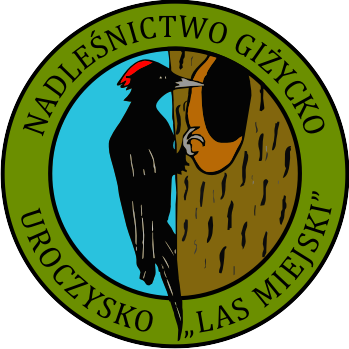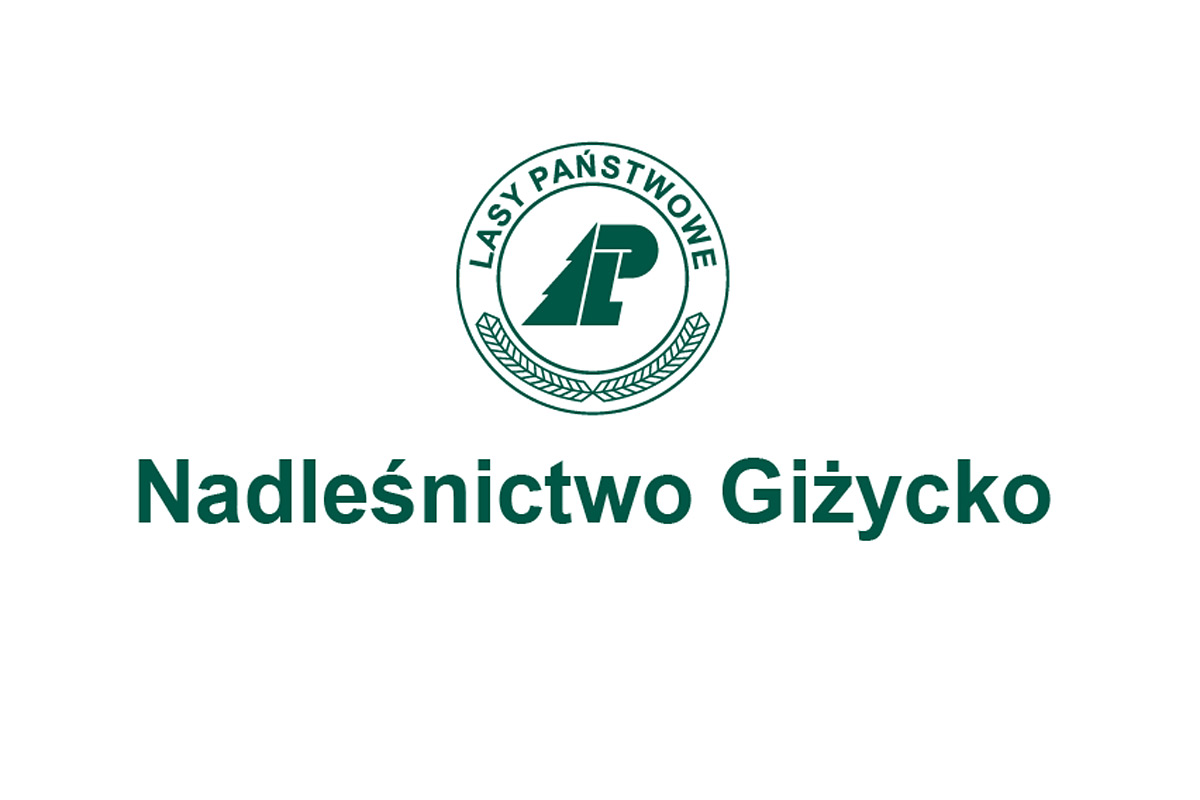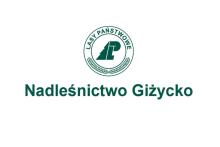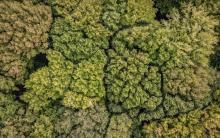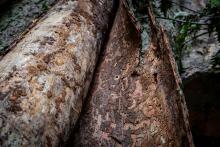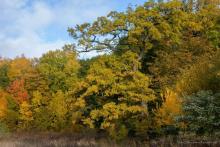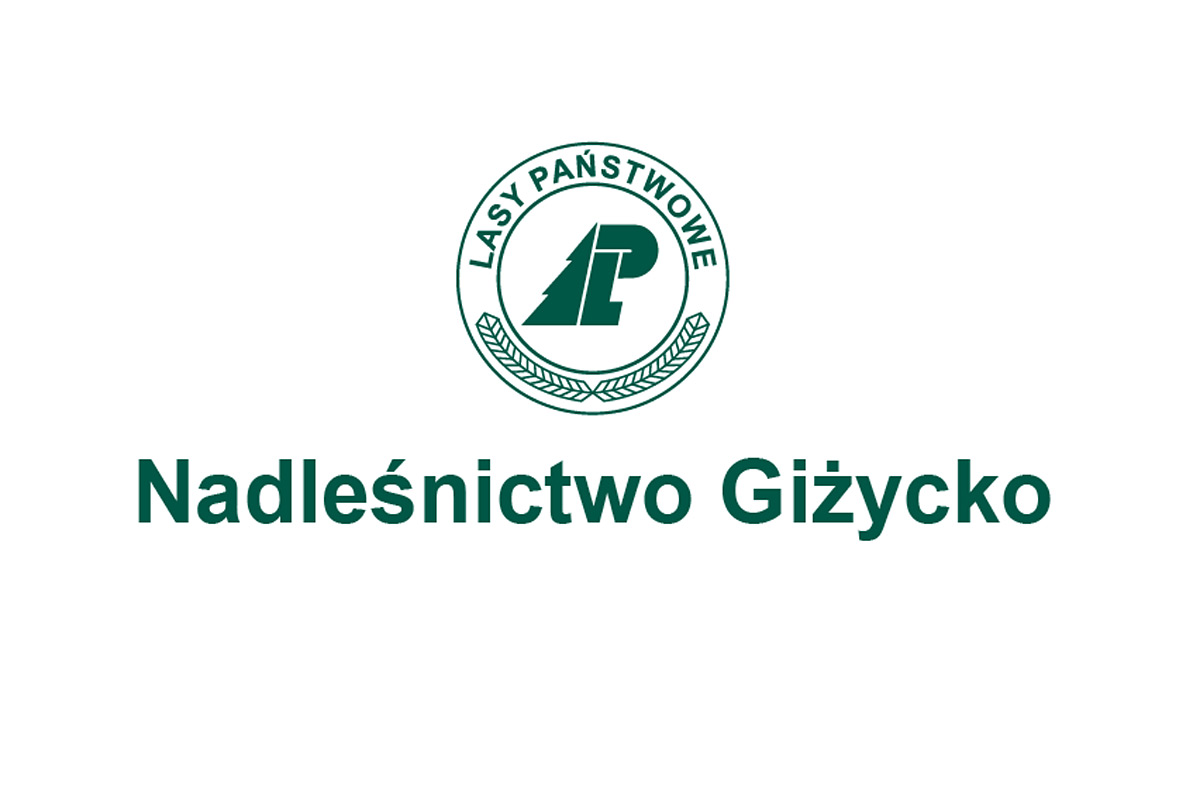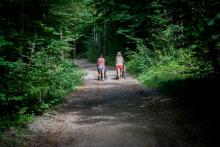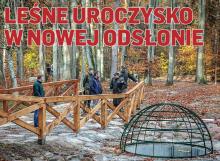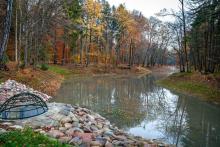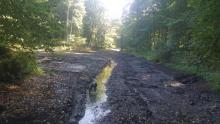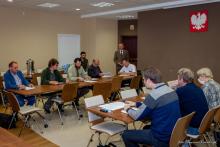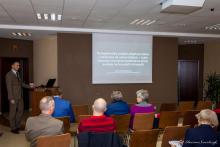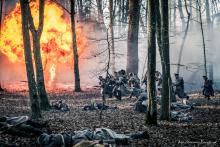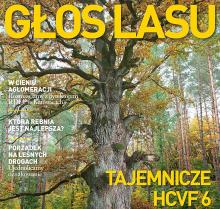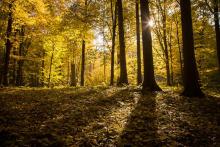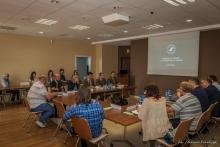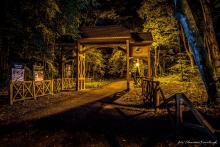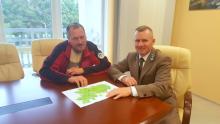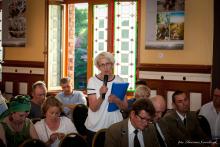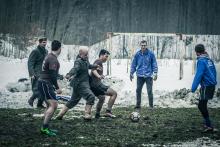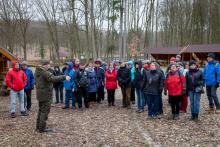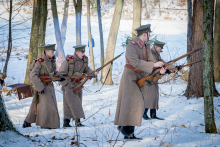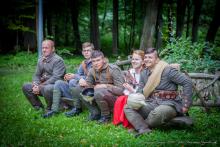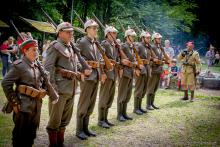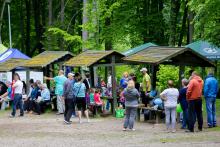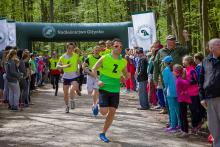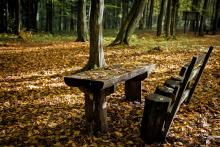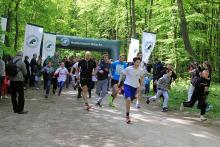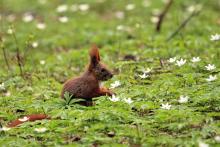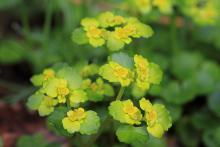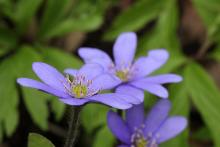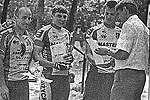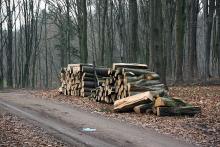MUNICIPAL FOREST - HISTORY

Before it was understood what a proper approach to the forests should be, in Europe, which until the 20th century was at the forefront of a civilisational development of mankind, the forests had been almost completely grubbed up. Deforestations were caused by the growing demand for wood, which was used as a building material and a raw material for the further processing, as well as for obtaining a land for the agricultural crops, orchards and pastures and for the location of the localities and villages. One of the most prosperous European countries was, from the 13th century onwards, the State of the Teutonic Order, which upon the secularisation of the Order was transformed into the Duchy of Prussia or, which then became part of the Kingdom of Prussia. The fate of these forests can be illustrated using a broad brush by what happened to them almost in the entire continent. The Knights of the Cross who were brought to Poland occupied the territory of the neighbouring forest-dwelling Prussian tribes, which they exterminated. Over the next five hundred years its forestation rate decreased from approx. 85% to 16%.
The forests were exploited by the colliers settling in them who, upon cutting down trees in a given place, moved further away. They produced logs and boards needed for the construction, barrels, paddles, cart wheels and wooden tools. They frequently left the land bare, as they also used the stump wood of the felled trees to make tar. The colliers often processed the wood on site. They burned it to make potash from its ashes. Charcoal, tar and wood tar were the result of the same process, taking place in the so-called charcoal piles, with a little access to oxygen. For the purpose of obtaining one kilogram of potash, half a tonne of wood had to be burnt. The clearings were left to its fate or turned into the agricultural and settlement areas.
There are hardly any deciduous trees left in the remaining primeval back forests, which were used by the colliers to produce potash and charcoal, needed in the ironworks, iron metallurgy and glassworks, in the manufacture of soap and the bleaching of textiles. A lack of oak trees was so afflictive that in 1686 it was ordered that each newly married couple should plant six trees of this species.
Around the former town of Gizycko (Lötzen) there were several forest areas, remnants of the former back wood. The first area with a surface area of four ‘łans’, old units of field measurement, was the municipality forest called Eichenwald (Oak Forest), another one was the ducal forest called Wojsak, situated between Wojsak Lake and Kisajno Lake. The islands on Kisajno Lake were also afforested. Furthermore, the inhabitants of the former town of Giżycko owned a large piece of the forest near the village of Jeziorowskie in the starosty of Węgorzewo, which was called Giżycko Municipal Forest at the beginning of the 18th century.
We learn about the benefits of the forest from the monograph entitled ‘Giżycko. Town and People’, which describes them as follows: ‘From the forests wood was drawn mainly for firewood and brewing, exceptionally for the construction purposes. An access to wood was rationed and depended on the social position of the townsman; a patrician could gather more wood, but the latter also paid a higher rent. The town statutes dedicated a great deal of provisions to this very issue. It was forbidden to go to the municipal forest to collect wood by cart, but dry wood and brushwood could be collected, although the owners of estates and manors were allowed to harvest half as much as those who had no land. It was not allowed to cut branches from a tree trunk (Art. 48). Hired men were allowed to collect wood in the municipal forest, but without the use of an axe, only what they could harvest with their hands (Art. 51). Large fallen tree trunks were to be used for common use as directed by the council (Art. 52). People could only go to the forest near Jeziorowskie according to a certain order set by the council, two per week (on Tuesday and Friday), while the owners of manors and innkeepers could use two horses (Art. 53).’
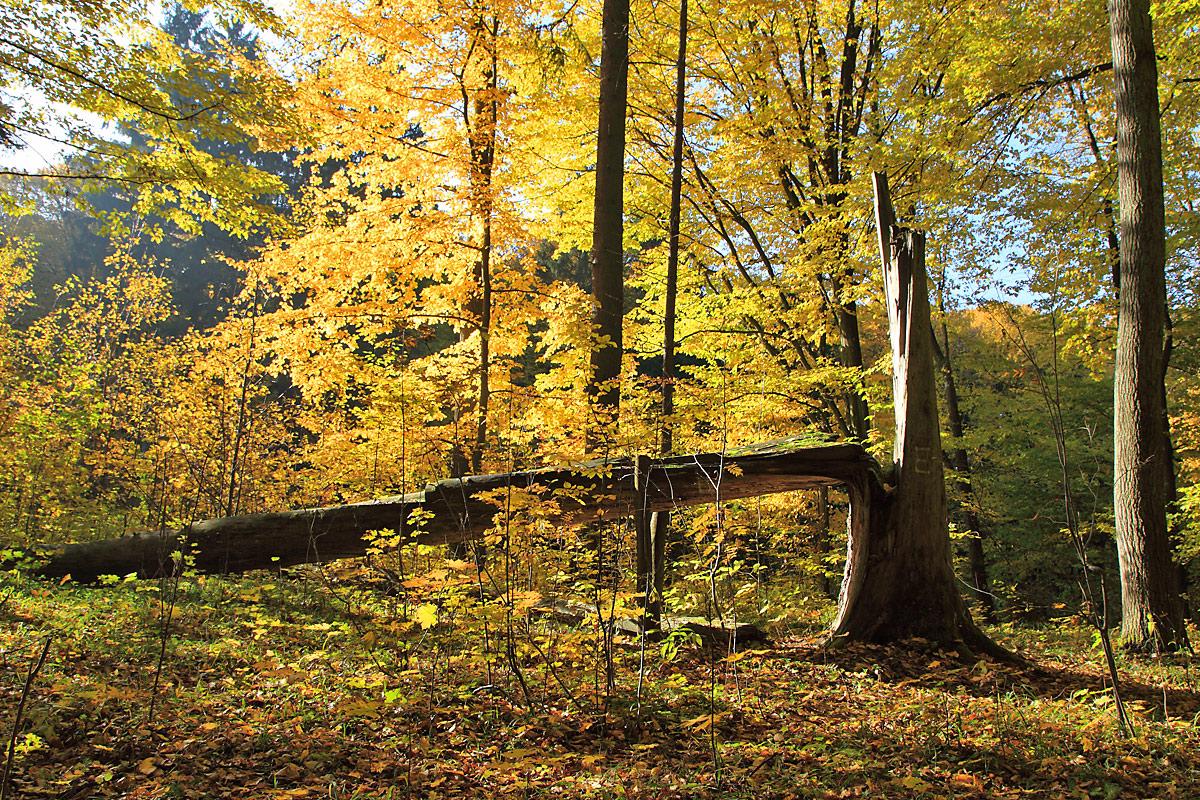
Some dates from the history of the Municipal Forest District Forest:
-
15th May 1612 - The inhabitants of Giżycko were granted a forest together with their municipal charter. The size of the forest was set at 4 ‘łans’, i.e., approx. 67 hectares. It stretched between the town, the road to Świder, Spytkowo and Sulimy. The municipal authorities employed a forester, who was in charge of the forest management. He had guards and sentinels to assist the latter. In return for their service, they received firewood for free, only in the middle of the 19th century this was changed into a financial compensation.
-
1685 - In Prussia, a shortage of oak trees was so severe that it was ordered that every newly married couple should plant six trees of this species. Probably as a result of the aforementioned, the name Oak Forest (Eichenwald) occurred, referring to the forest granted with the municipal charter.
-
1796 - Two sheds for the forest guards were built in the forest (formerly the dwellings of poorer inhabitants were called so).
-
17th January 1818 - A powerful cyclone struck the Masurian Lake District. It raged over Giżycko and within 7 hours destroyed ¾ of today's Municipal Forest, blew roofs off of most buildings, demolished the mill and several buildings.
-
17th March 1858 - The assembly of town councillors decided to change the previous name of the Oak Forest (Eichenwald) into the Municipal Forest near Lec (Kmmereiwald).
-
1860 - The Shooting Fraternity was founded and its shooting drills in the Municipal Forest enjoyed a great popularity. The exercises were intended not only for recreation, but also to raise the spirits of the inhabitants and for military training.
-
1869 - The road between Giżycko and Węgorzewo was constructed, which crosses the forest complex (at present it is the national road No. 63).
-
1891 – The important changes in the appearance of the Municipal Forest took place at the end of the 19th century, when plans for its management were developed. This was connected with a rapid development of tourism and the possibility of making the beauty of the forest and its surroundings accessible to the multitudes of tourists.
-
1891 - On Wilhelm Hill, 181 metres above sea level and 74 metres above the neighbouring lakes (today's Imionec Hill) at the edge of the Municipal Forest, a 20-metre-high observation tower was erected for 8,590 marks and 47 pfennigs. From its terrace one could admire the vast panorama of the lakes (a surface area of 60 km2) with a ticket for only 10 pfennigs. In the summer season, the keeper’s wife served cool drinks, coffee and cakes to the tourists.
-
1891 – Due to the efforts of the association for the beautification of the town, a pedestrian promenade, today's Waldalee (Lime Avenue), was constructed, which led from the town to the forest. At the same time a range of footpaths were marked out in the forest: the valley one (German: Talweg, designated in blue and white), the middle one (German: Mittelweg, designated in red), the hills one (Höhenweg – designated in white), the ridge one (German: Kammweg) through a ridge of hills.
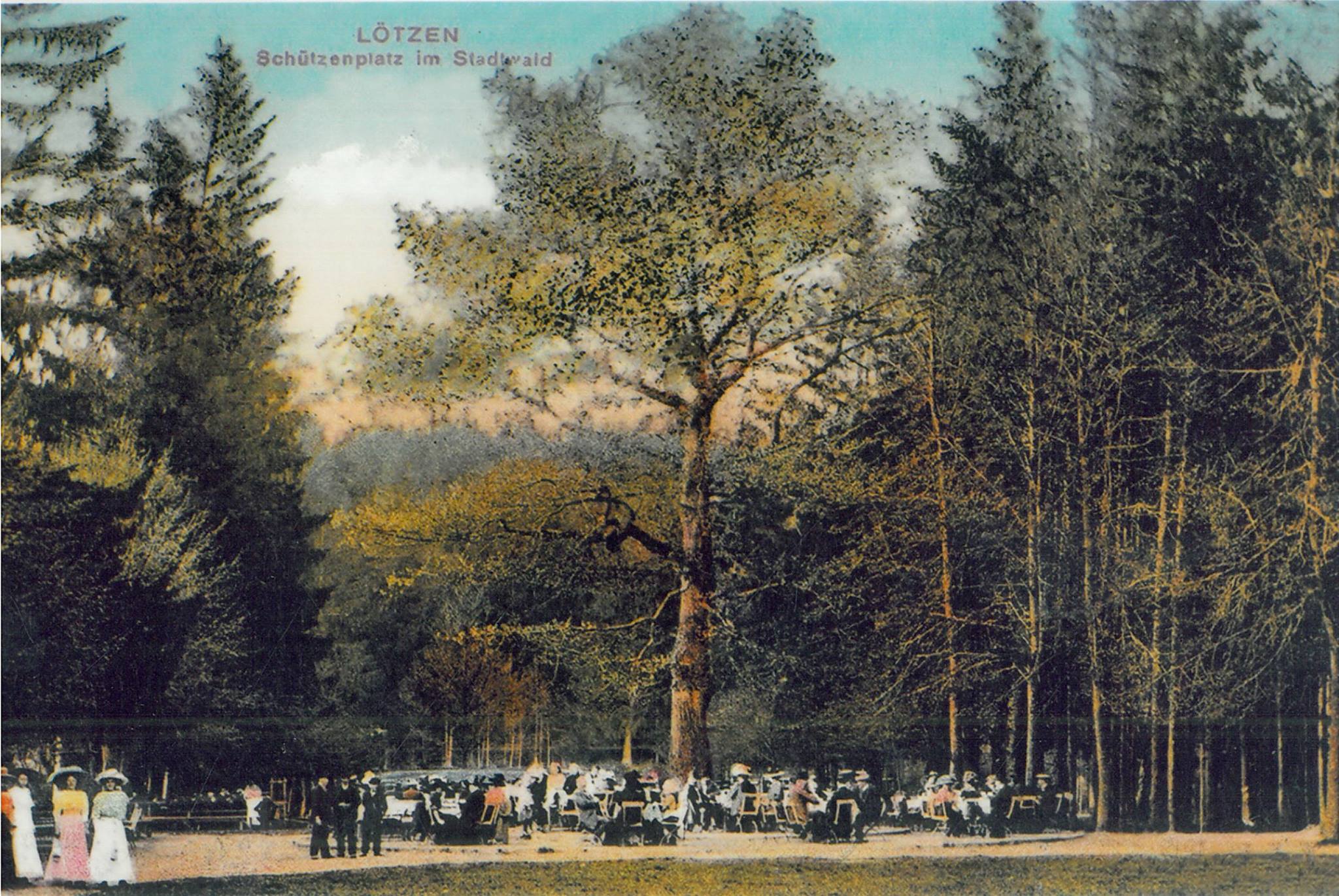
- At the largest pond a shooting range was built, from which the promenades led to the several surrounding ponds (forest Karpieńce). At the shooting range there was a seasonal cafe with several guest rooms. At weekends the local military orchestra or the Giżycko choir played under the baton of the director of the Max Schimkat boys' school. Numerous competitions were organised at the shooting range, among others for the title of the king of the archers.
North of the ponds lived the forester Friedrich Just (today, 10 Dworska Street). His daughter Margaret, allegedly gifted with a beautiful voice, with her singing frequently made walkers stop to listen to her. -
The end of the 19th century - Maintaining the forest cost the town's budget a lot of effort (the income generally did not balance the expenses incurred for its upkeep), and at the same time the town still owned 14 ‘łans’ of land, i.e., ca. 235 ha, near Jeziorowskie village in the Borecka Back Forest. Eventually it was decided at the end of the 19th century to sell all forest areas to the local forest district.
-
November 1907 - Two brothers Walloch, Johan and Leopold, and their cousin, owners of a large fishing cooperative, established a carp farm in the ponds in the Municipal Forest. The first carp from these ponds could be bought at the end of November 1907.
-
1912-1919 - The 1st Battalion of 82nd Field Artillery Regiment was stationed in the Boyen Fortress.
- 1913 - The Municipal Forest was visited by Mieczysław Orłowicz, Ph.D., the author of the ‘Illustrated guide to Prussian Masuria and Warmia’. He described his impressions as follows: ‘The most beautiful is the walk from Lec to the Wilhelm Hill, 3.5 km to the north and the Municipal Forest. The road leads through Wegoborska Street (German: Angerburger Strasse), where the intermediate school (gymnasium) is situated. Behind it, there is a shorter footpath into the municipal forest, with the benches and a lime avenue. A catholic chapel stands between it and the highroad. While walking along the highroad at kilometre 3.5, there is a signpost indicating a turn to the left on the way to the highest point of the Lec area, Wilhelmshöhe, which is topped by a 20-metre observation tower featuring a gallery located at 190 metres above sea level and 74 metres above the neighbouring lakes. From the tower you can see an area of 60 km2 all around, and the view includes the entire eastern part of Masuria, visible from here as if on a map.

At your feet lies Giżycko - Lec and Lake Niegocin, and further to the north - Lake Mamry, behind which red roofs of Sztynort - Steinort palace emerge from the forest, to the south the view goes beyond Wydminy, to the east through the huge forests up to Gołdap and Szeskie Hills. Especially beautiful is the view at the sunset. Next to the tower there is an inn.
On the neighbouring hills the town forest. Behind Wilhelm Hill the hiking path (German: Höhenweg) designated in white goes downwards into the forest. Following it, you visit the most beautiful parts of the forest, where pine and deciduous trees mix. After an hour you reach the shooting range. From here you can return to the highroad via the second, somewhat shorter Talweg (designated in blue and white). Both paths are connected by a middle path (German: Mittelweg, red designations) which passes a nice forest out-of-way place. The shooting range lies above a nice pond, from here there are promenades to several ponds which feature special facilities for breeding carp. Next to the shooting range there is a restaurant where music is played in the summer afternoons. Not far from the Wilhelm Hill at the highroad the picturesque ‘Waldschlösschen’ villa is situated. A path leading from Wilhelm Hill along the ridge of the hills is recommended for the return trip to the town due to the beautiful views.

Among the walks listed here, counting from the market square, it takes 80 minutes to walk around the Boyen Fortress along the promenade, 45 minutes to reach the observation tower, and 45 minutes to access the shooting range.'
-
August 1914 - The viewing tower was blown up by the German army at the beginning of the First World War to eliminate a convenient observation point for the Russians.
-
After 1920 – The sparse cases of people practising ski running began to be seen in the Municipal Forest.
-
1 August 1922 - The Shooting House (German: Schützenhaus) in the Municipal Forest was ceremonially opened and it offered a five-bed accommodation. The shooting house was the headquarters of the Shooting Club (German: Schützenverien), which organised an annual shooting match (German: Schützenfest). Walter Drogulaut and Willy Dmoch were the owners of the house.
-
Around 1924 - In the Municipal Forest a monument was erected opposite the shooting range, on the other side of the largest pond, to the fallen German soldiers of the 82nd Field Artillery Regiment. The author of the monument was Georg Fung, an artist from Pieniężno. The monument depicts the figures of two crouching artillerymen, who are placed on a high pedestal.
-
Winter 1930/1931 - A lecture and the presentation of the film under the title ‘The White Ecstasy’ (German: ‘Der weiße Rausch’) took place in the headquarters of the shooting club in the Municipal Forest and resulted in the foundation of the Lötzen Skiing Association (German: Lötzener Skivereinigung) the same winter. Thenceforth the famous ‘hunt the fox’ cross-country skiing race was organised in the Municipal Forest every winter season.
-
Around 1932 - In the Municipal Forest a small ski jumping hill was built, which enabled to practice jumps up to 15 metres long.
-
1934 - Giżycko hosted the East Prussian skiing championships. On this occasion the competitions of one of the championship disciplines was held in the Municipal Forest: the cross-country skiing.
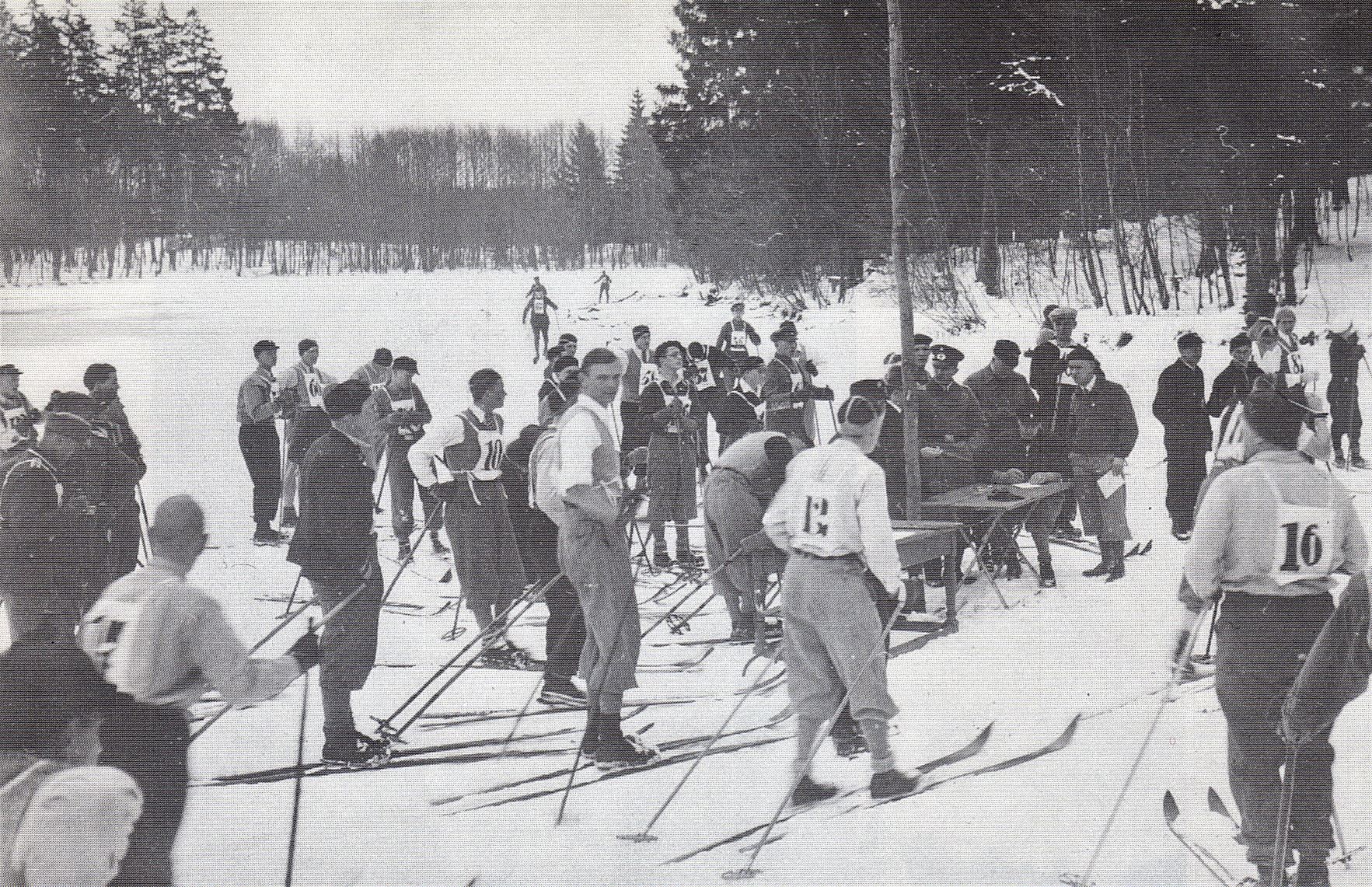
-
The saying: man + nature = culture was born.
-
1st March 1947 – The Łuczany Forest District took over the administration of the Municipal Forest (in 1947 the name of the Forest District was changed to Giżycko Forest District).
-
26th June 1956 - By the decision of the Presidium of the Provincial National Council in Olsztyn No. 156/56, two pedunculate oaks named ‘Wojciech’ and ‘Wyniosły’ were given the status of monuments of nature.

-
26th June 1968 - By the decision of the Presidium of the Provincial National Council in Olsztyn No. 344/68, the ‘Dowejko’ Pedunculate Oak and the ‘Domejko’ Pedunculate Oak were given the status of nature monuments.
-
2000 - A nature and education path called ‘Municipal Forest’ was created, consisting of two differentiated routes. The shorter one (about 2 km long) is intended for children and adapted in its form to the youngest. The second route, about 3 km long, is designed for youth and adults. It presents more complex issues of forest management, natural sciences and ecology. The routes have been marked out through the very attractive forest areas in terms of biodiversity, partly around mid-forest ponds.
-
12th May 2002 - The 1st Mazurian Cycling Race for the cup of the Forest Manager of the Giżycko Forest District took place in the forest.
-
24th September 2004 - By the Ordinance No. 19/04 issued by the Warmian and Masurian Voivode, the ‘Franciszek’, ‘Bolesław’ European larches and ‘Wilhelm’ Pedunculate oak received the status of nature monuments.
-
17th May 2006 – The ceremonial opening of the ‘Quercus’ Chamber of Nature and Forestry Education. The Chamber was founded in the former forester's lodge.
-
November 2008 - The construction of lanterns illuminating a large glade and a fragment of a walking route leading to it from Giżycko was completed.
-
December 2008 - An automatic forecasting point was launched on the premises of the ‘Quercus’ House. The point is a part of a network of 11 automatic measurement points located in the area of Białystok Directorate of State Forests. Information measured over there on a current basis: temperature, precipitation, insolation - are taken into account while determining the current degree of forest fire hazard.
-
2012 - Right next to the ‘Qurecus’ Chamber of Nature and Forestry Education, the Giżycko Forest District begins construction of its new registered office.
-
18th August 2014 - The ‘Boyen Operation’ took place in the Municipal Forest, consisting of a re-enactment of historical battles between Russian and Prussian troops who fought each other in the Municipal Forest in August 1914.
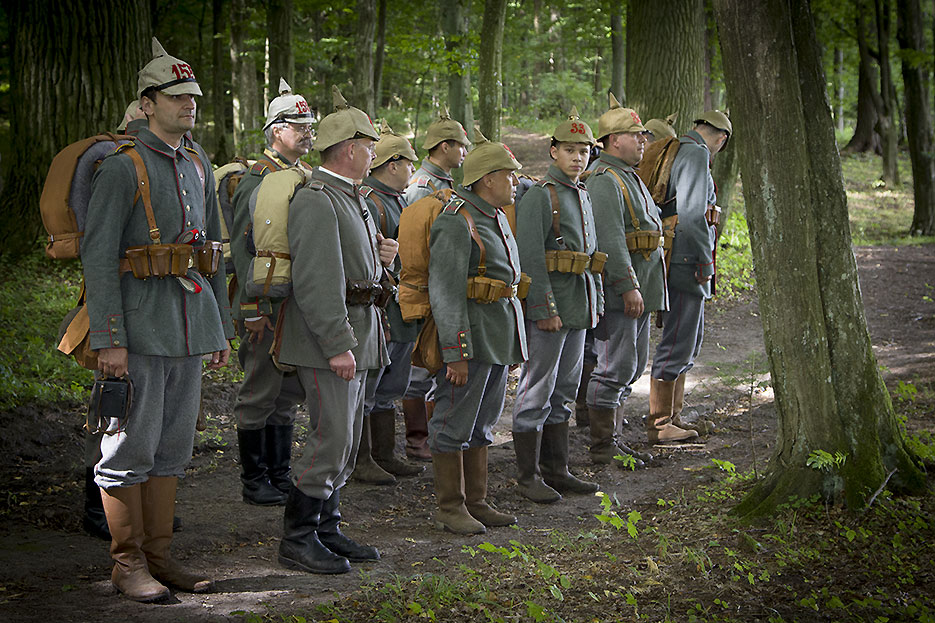
-
25th August 2014 - The office of the Giżycko Forest District commences its activity in the new premises. New address: Gajewo, 12 Dworska Street.
-
26th June 2015 - Due to the efforts of the Giżycko Forest District, the revitalisation of tourist facilities located in the large glade, created around the year 2000, began. By the end of October 2015, a new platform and arbour were built.
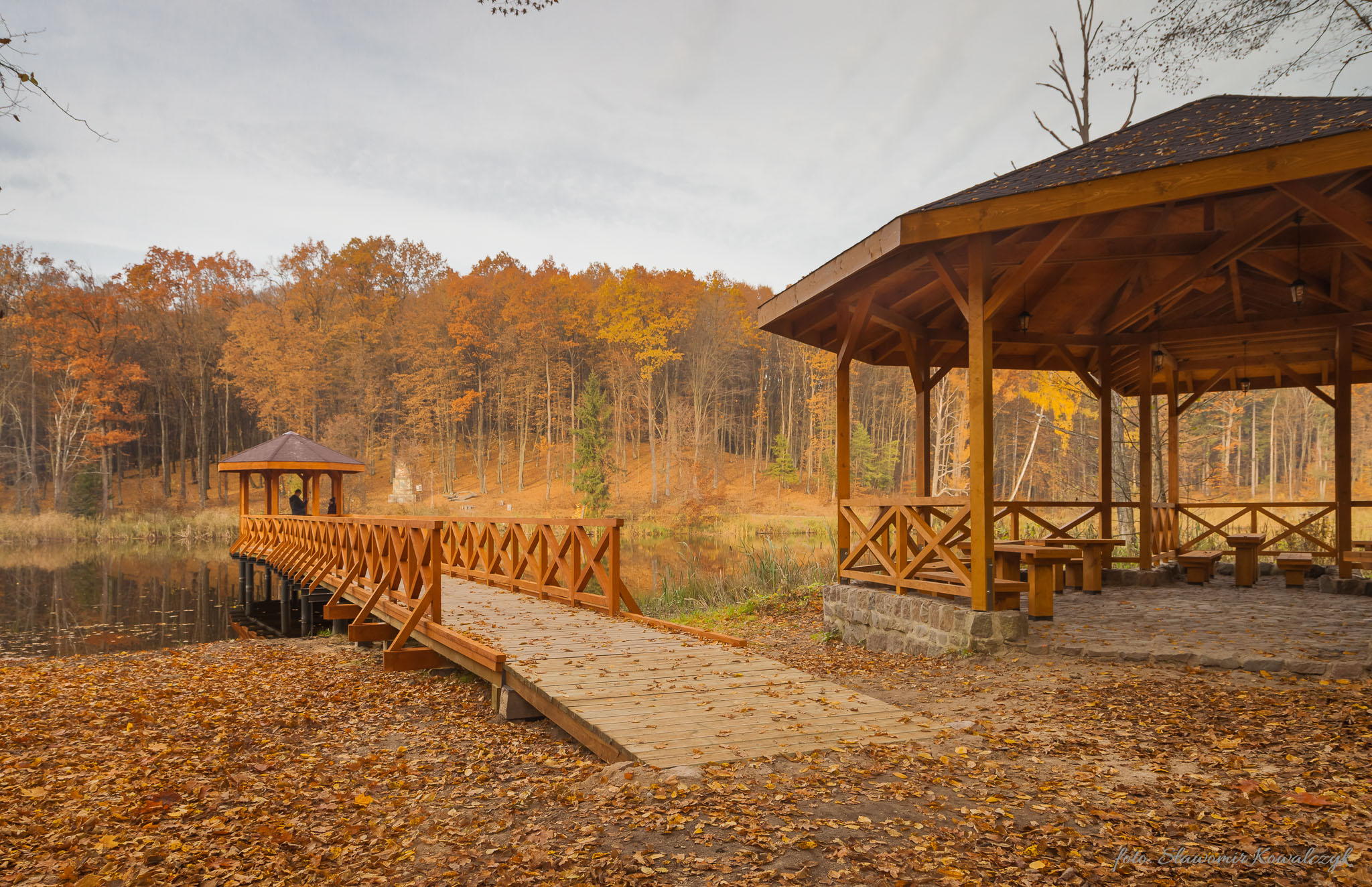
You can take a virtual walk through the Municipal Forest, just click on the photograph below.
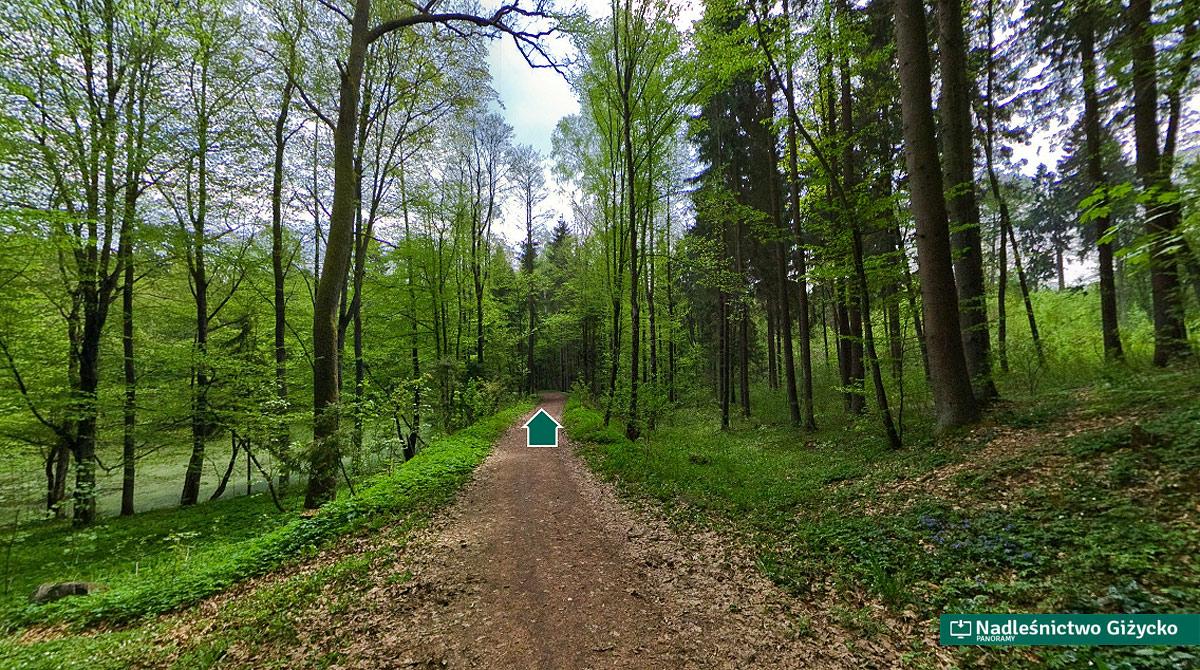
References:
- Andrzej Wakar, Tadeusz Willan, Giżycko z dziejów miasta i powiatu, Wyd. Pojezierze, Olsztyn 1966.
- Ernst Trincker, Kronika gminy leckiej [giżyckiej], Wydawnictwo Mazurskie, Giżycko 1997.
- Marek Kowalczyk, Kazimierz Pietrachowicz, Jan Sekta, Giżycko na starych pocztówkach 1896-1945, Wyd. Kancelaria Radcy Prawnego Marek Kowalczyk, 2012.
- Marek Kwiatkowski, Las wyłonił się zza drzew, Centrum Informacyjne Lasów Państwowych, Warszawa 2011.
- Mieczysław Orłowicz, Ilustrowany przewodnik po Mazurach Pruskich i Warmii, Agencja Wydawnicza „Remix", Olsztyn 1991.
- Collective work edited by Grzegorza Białuńskiego, Giżycko. Miasto i ludzie, Urząd Miejski w Giżycku, Giżycko 2012.
- Wojciech Kujawski, Niegocin, Wydawnictwo QMK, Olsztyn 2010.
Scans of old photographs and postcards come from private collections: Wojciech Kujawski, Tomasz Czerniawski and Bohdan Makowski.


